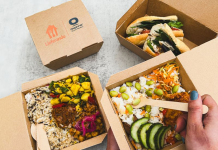
On 10 January 2025, the second edition of the Think Circle took place at the Finnish embassy in New Delhi. The event was a collaboration between the Finland-based global packaging company Huhtamaki and the Confederation of India Industry, hosted by the Finland embassy. There were two parts to the event – a closed-door roundtable in which the Ministry of Environment, Forest and Climate Change took part with consumer product brand owners, policymakers, and Huhtamaki. The second and more public session featured a presentation of the Design for Recycling Guidance for Films and Flexible Packaging,’ and a panel discussion followed by some questions and answers.
In his opening remarks to the afternoon public session, Finland’s ambassador to India, HE Kimmo Lähdevirta said, “Finland has been at the forefront of circular economy innovation, pioneering sustainable solutions that transform how we design, use, and recycle materials. For Finland, circular economy is a tool for achieving sustainable development, combatting climate change, saving natural resources, and improving the state of the environment, all while generating economic growth and jobs.” He added that together with Indian companies, stakeholders, and government agencies, the two countries could work together in playing a leading role in advancing the circularity of flexible packaging and inspiring change globally.
After the presentation of the design for recyclability guidelines by Chinmaya Dandekar, GM packaging and sustainability at Godrej Consumer Products, a panel discussion was held. The panelists included Dandekar, Rashi Agarwal, chief business officer, Banyan Nation, Vishal Poojara, Procurement and Packaging Sustainability, ASEAN region for Mondelez India, Sanjay Gupta, head of Packaging, DS Group, Snigdha Berry, Corporate Affairs, Nestlé, and, Dhananjay Salunkhe, managing director of Huhtamaki India. The moderator was Ruturaj Kamthekar, vice president of Strategic Business Development and Marketing of Flexible Packaging at Huhtamaki.
The design guidelines span essential categories of flexible packaging applications such as food products, personal care, and homecare-related products. The guidelines point to the increased use of monomaterial structures and limiting contaminants to make them easy for mechanical recycling, which is currently the most widespread and viable method.
However, at the beginning of the session, Salla Ahonen, EVP of Sustainability and Communications at Huhtamaki, said that the key role of flexible laminates in food packaging is the safety and shelf-life of the food itself. “Food waste is responsible for 10% of global greenhouse gas emissions. The packaging for food is a smaller part of global greenhouse emissions.”

Conviction – sustainability is neither complex nor expensive!
The panel endorsed the guidelines including the need for monomaterials and the need to begin this transition. One suggestion, the need to standardize packaging to enhance its collection value and to make it easier to generate volumes for recycling was not fully embraced by the brand owners on the panel. In fairness, this may not have been the occasion to understand to delve into this idea in depth. To a large extent, this reflects the consumer product companies’ inability to discuss and act together. They still think or believe that the multiplicity of formats and materials used are critical to the individuality and shelf–impact of their products and packaging design.
Panelist Sanjay Gupta was direct in his statements, “This business of developing and executing sustainable only requires conviction. It is neither complex nor expensive.” He was also categorical in his reply to several other questions and is one of the few persons in the industry who addresses the ideas of circular economy and sustainable packaging from a cultural and holistic point of view. He clearly understands the roles of the consumer product industry and packaging, as subsets of the entire economy and culture.
According to him, the entire society, starting from primary education to industrial engineering – needs to imbibe and embrace circularity in its thinking – at every level and stage from cradle to grave and from product concept to end of life. In addition, he approaches the entire process with optimism and simplicity emanating from his confidence in the overall evolution and progress of the country.









